Let’s Learn from Zinc Studies this Growing Season
We are rapidly coming upon spring. And for many in the pecan industry, that means zinc. Pecans are uniquely sensitive among nut crops in their susceptibility to zinc deficiencies. This might be a consequence of a higher zinc requirement than some other plant species. Or perhaps it’s due to the kinds of soils that we...
Read more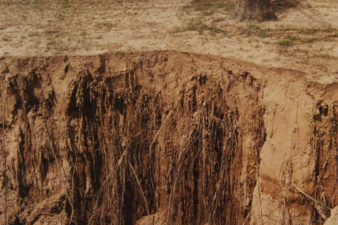
Pecan Roots—A Sight Unseen
Our eyes are one of our best tools for learning about our trees. It’s a relatively simple thing to see what’s going on in a tree canopy, but it’s a much more difficult process to see what’s going on underground with the tree’s root system. More than that, usually, when we look at roots, we...
Read more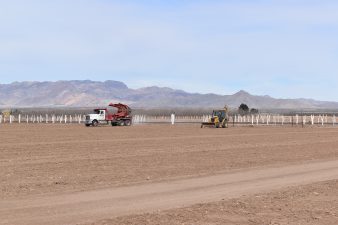
Alternate Bearing Considerations for the West
Some fruit and nut tree species are famous for their alternate bearing, their tendency to swing back and forth every other season between really heavy (‘on’) crop loads and really light (‘off’) crop loads. You can see this kind of thing with apples, citrus, pistachios, olives, and avocados, among others. And, of course, you can...
Read more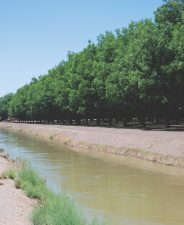
Deep Percolation—One of Irrigation Water’s Forgotten Fates
Whenever you irrigate your pecan orchards, there are really five distinct fates for that water. “Fates” probably sounds a bit too ominous, but that’s not the intent—maybe think about this as five different “destinies” or outcomes for the water. Here they are. Fate #1) The applied irrigation water could be taken up by the pecan...
Read more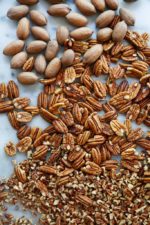
What’s Affecting My Crop’s Nut Quality?
At harvest there is always a lot of interest from growers and buyers alike in the final quality of the pecan nuts. Nut quality is a super complicated topic because it involves a lot of different characteristics of the nuts themselves and because it is influenced by a broad and complex range of factors over...
Read more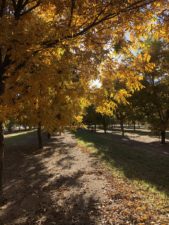
Advice for Late-Season Orchard Floor Management
In the West, pecan growers are increasingly using an orchard floor management system where a “mow strip” is maintained in the driving lanes between the tree rows, and a 6- to 8-foot wide vegetation-free strip is kept in the tree row (3 to 4 feet on either side of the row). In conventional orchards, a...
Read more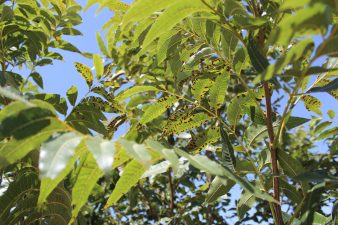
It’s time for leaf tissue analysis for pecans
It’s about that time in the season for us to start thinking about collecting leaflet tissue for nutrient analyses. During this time each season, every grower has to ask, “How much fertilizer should I apply in my pecan orchard?” Annual leaf tissue analyses are currently the best thing out there to get a true answer....
Read more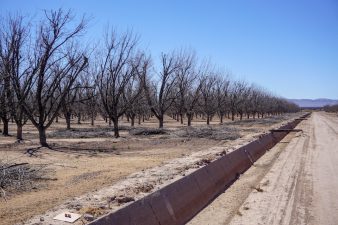
Salinity management considerations ahead of planting
Salinity is a major and growing concern in pecan orchards across the western United States. Although salinity is always a potential issue in irrigated agriculture, drought has really moved it to the forefront for many areas. What do growers need to look at ahead of planting a pecan orchard? One of the most important things...
Read more
The end of the growing season means preparing for winter
Recently I had a discussion with some colleagues about when the pecan growing season actually ends. That might seem like a very simple question to answer for a grower: harvest is the end of the growing season. True enough. But from the tree’s perspective, when is it really over? When has the dormant season truly...
Read more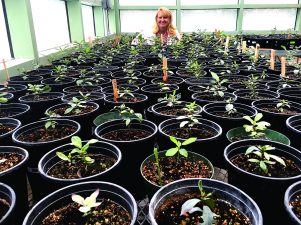
The importance of pecan rootstocks for semi-arid regions
Why are rootstocks necessary in pecan? The answer to this question is that they actually aren’t necessary at all. Pecan trees can be grown from seed and planted without grafting. Without grafting you don’t have a rootstock per se. The catch, though, with ungrafted seedling pecan trees is you don’t know exactly what you’re going...
Read more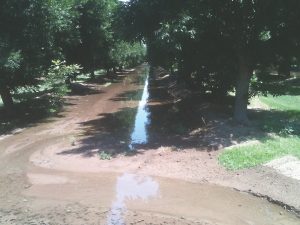
The Downsides of Overwatering Pecans
When it comes to irrigation scheduling, we tend to talk most often about how important it is to make sure that irrigation water is applied in sufficient volumes and frequently enough to meet the consumptive demand or evapotranspiration (“ET”) of our pecan orchards. And there is no doubt that that is a really big deal!...
Read more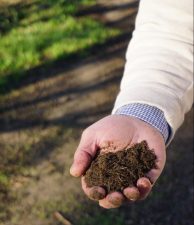
How to increase the soil organic matter in your pecan orchard
Many of you will soon receive the lab analysis results of your winter-time soil samples. If you haven’t already collected your soil samples, let me encourage you that it might not be too late in early March to do this. However, I would recommend that you do it before you start applying fertilizers for the...
Read more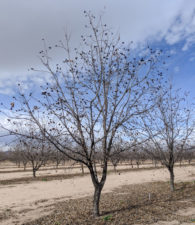
Pecan Winter Activities for Western Orchards
After the dusty whirlwind of harvest passes, outsiders may easily think it’s finally time to take a little break from pecan orchard activities. There is a certain amount of truth in that. After all, the trees are dormant. It looks so quiet and peaceful. The constant hum of zinc sprays, irrigation, insect pest control, and...
Read more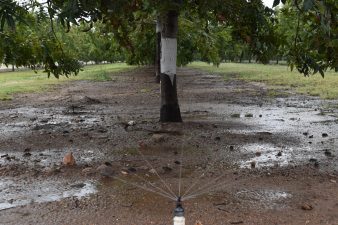
Micro-Irrigation versus Flood Irrigation
Basin flood irrigation remains popular in some of the traditional pecan growing areas of the western region, but increasingly producers are making use of micro-irrigation. Recently I wrote an article in Pecan South about timing your irrigation events if you are using a basin flood irrigation system. In this article here, I will compare and...
Read more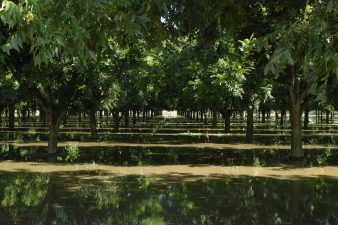
Your Pecan Tree’s Piggy Bank & Water Budgeting
As we move into the 2020 growing season, we should take some time to discuss how to know when to irrigate and how to know how much water to apply—irrigation scheduling. There are several different methods that growers can use to schedule irrigations, some better than others. Some producers may prefer the completely non-scientific approaches,...
Read morePecan Trees Prepare to Face Winter Head-On
Winter can be horrible news for plants, even here in the “balmy” Southwest. The days get shorter and sunlight intensity decreases as we approach winter, making photosynthesis tougher and tougher. In addition, plants have no choice but to slow all activities way down as temperatures dip, since the rates of a plant’s metabolic processes are...
Read more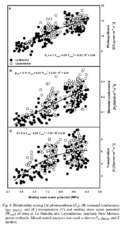
Photosynthesis: Turning Sunlight, Water and Air into Pecans
Except for a few parasitic plants, plants do not depend on any other organism to capture their food energy for them, the way we do. Most plants can make all of their own food using the chemical reactions of photosynthesis to supply what they need for energy and growth. There are really only three “raw...
Read more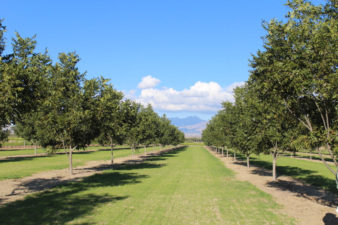
Take your head out of the canopy, focus on the orchard floor
Although the goal of a grower’s orchard operation remains the same—to produce and sell the best pecans—the steps a grower takes to create the perfect crop changes as an orchard’s needs, scientific recommendations, and the seasons change. Oftentimes, a producer may find themselves so focused on the details of management that they forget about how...
Read more3 Steps to Diagnose Unknown Disorders in Your Orchard
I’m sure every single one of you has come across one of those “mystery problems” in your pecan orchards. I’m not talking about the simple, everyday stuff that you already can easily diagnose. I’m talking about those trees that just aren’t growing normally. Or maybe that corner of the orchard where all the leaves are...
Read more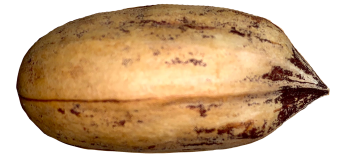
New Plantings Require a Few Variety Considerations
At the top of some pecan producers’ minds right now is the preparation for new orchard plantings. It’s probably a little late now to change this year’s order for nursery trees, but here are some important considerations when you’re deciding on a cultivar mix for your new plantings in the western growing region. History ...
Read moreReflect, Recognize, Resolve
The end of December is always a time of personal retrospection, looking back on the year to see what went as planned and what didn’t; what was accomplished and what wasn’t. It’s a time to think about ways we did things just right or mistakes we made and how we’re going to make next year...
Read more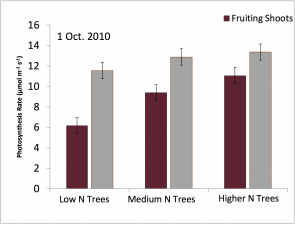
Macronutrients: Keep the leaves healthy to feed the kernels
The two months or so leading up to nut maturity that we are now in are an extremely active period for a pecan tree. We will see the fruit make a transition out of the water and gel stages into the kernel fill stage. And then during this important stage of nut development, the seed...
Read moreWhat’s the Scoop on Nitrogen?
Nitrogen is a “building block” of a vast array of plant biochemicals. To farm pecans successfully, you probably don’t need to know the names of all of these, but you’ve definitely already heard of some of them: – amino acids and proteins: including enzymes that make all of the biological processes in the plant actually...
Read more
Salinity, Another Key to Orchard Management
If you’re going to grow pecans in the southwestern states you’ll need to irrigate. That’s a given. Every time we irrigate, though, we’re adding more than just water. Every time we irrigate, we’re adding some amount of salt to the soil along with the water. It might just be a little bit of salt or...
Read more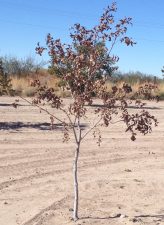
Not Just Cotton, Not Just Roots, Cotton Root Rot Affects Pecan Trees
Compared with our pecan-growing friends in the humid central and eastern production areas, we in the western states, fortunately, have very, very few plant disease issues that we struggle with on a regular basis in our pecan orchards. Sometimes I’ll even hear folks say that we don’t have any pecan diseases out here because it’s...
Read more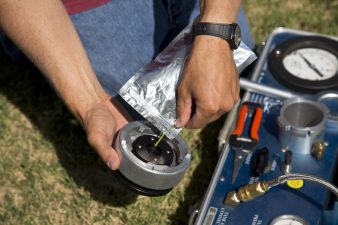
Using Data to Schedule Irrigation & Analyze Soil Moisture
Getting irrigation exactly right is one of the most important things that a pecan grower in the West needs to do. This is particularly true during the middle part of the season when we may see a couple of waves of natural fruit drop and the latter part of the season when the kernel develops....
Read morePecan Pollination: The Answer is Blowing in the Wind
We are rapidly approaching bloom in our pecan orchards in the western growing region. As I write in early April, catkins are already visible. It won’t be very long before we’ll see the female flowers start to appear as well — giving us a little glimpse of the cropping potential in our orchards in 2017....
Read moreMechanical Pruning in the West
It has become abundantly clear in the past 10 years that mechanical topping and siding (hedging or mechanical pruning) is the best method currently available for light management in pecan orchards in the West. People have been experimenting with numerous different strategies for mechanical pruning for a very long time. In particular, I think we...
Read moreManaging to reduce freeze injury risk in pecan orchards in the West
Summer’s almost here and the weather is getting very warm – so it may seem a little strange to some of you to have an article about managing freeze injury. But I think folks from eastern New Mexico and parts of western Texas will consider this to be a very timely topic, as they are...
Read moreThe “Other” Micronutrients
It is well known that most pecan orchards, especially out here in the West, require zinc fertilizers for normal leaf expansion, shoot growth, and nut production. And in the past five years or so, most pecan growers have become proficient at spotting the telltale signs of nickel deficiency. But very rarely do they discuss other...
Read moreStressing Out
No doubt a few of us have experienced firsthand how a “stressful” lifestyle — maybe worries about the economy or the kids — is bad news for our own health. Horticulturists and orchard managers also often speak about minimizing “stress” in our orchards so that we can maximize tree performance (and hopefully lower our own...
Read moreManaging Crowding of Orchards in the West
Pecan trees LOVE the light. That’s really all there is to it. In their native habitat, young pecan trees can rapidly grow to great heights if given a nice patch of sunlight — then once they’ve surpassed all the other surrounding trees in height, they’ve got it made in the sun, so to speak. But...
Read moreIrrigation Scheduling Using Soil Moisture Monitoring
I think just about everyone in the pecan industry already knows that maintaining water status in orchards is of utmost importance for consistently producing top pecan nut yields and top pecan nut quality. When trees become water stressed, photosynthesis slows, shoot growth stops, nuts drop, and the remaining kernels don’t fully fill—all bad things if...
Read more